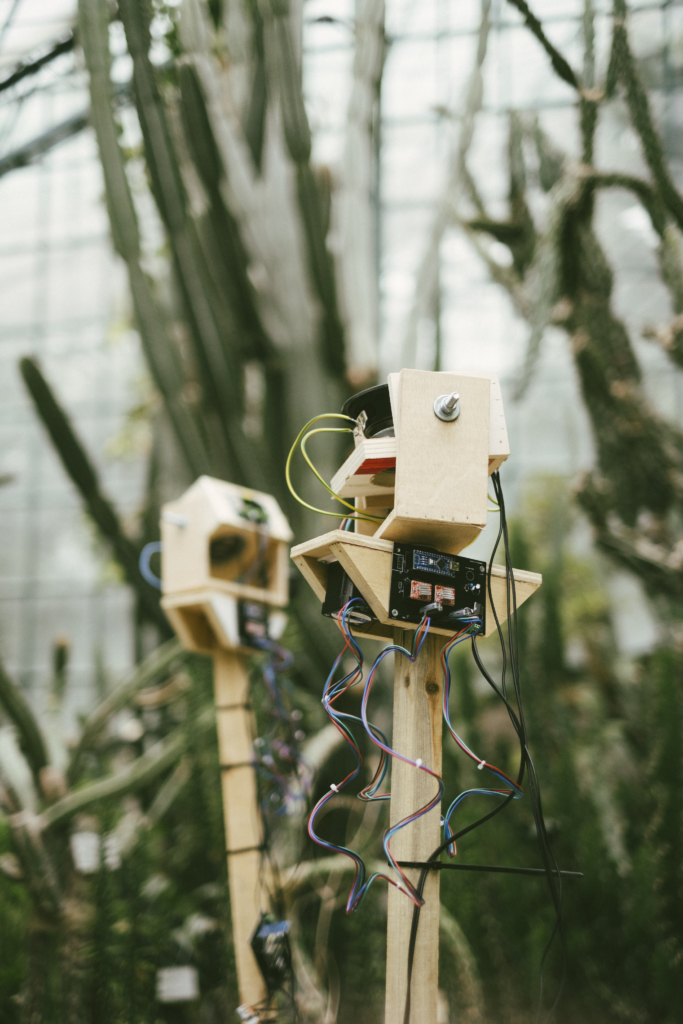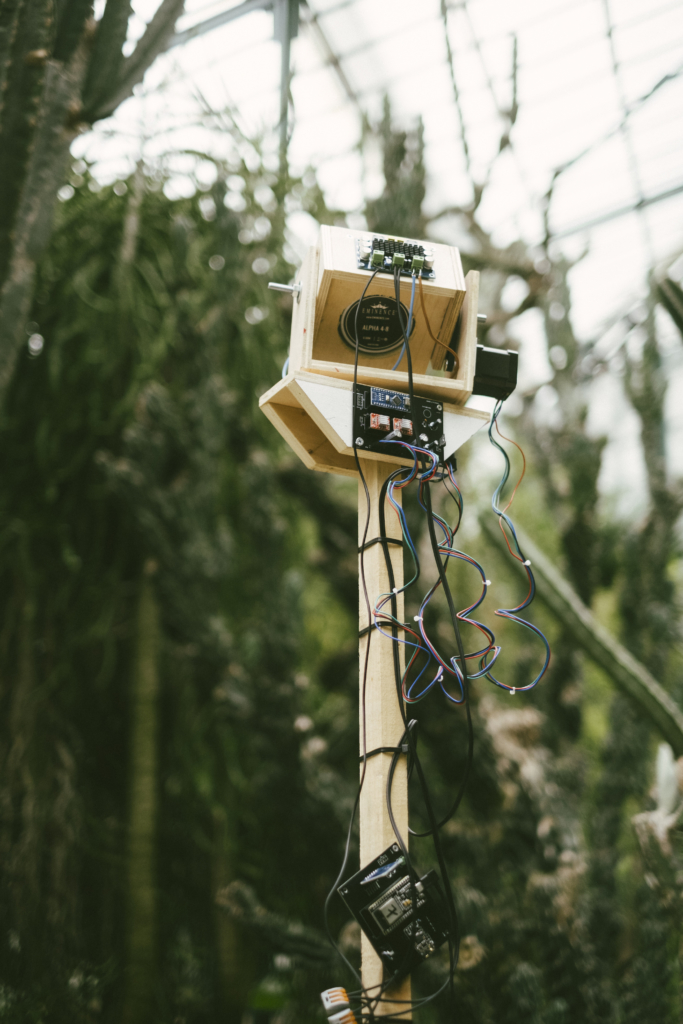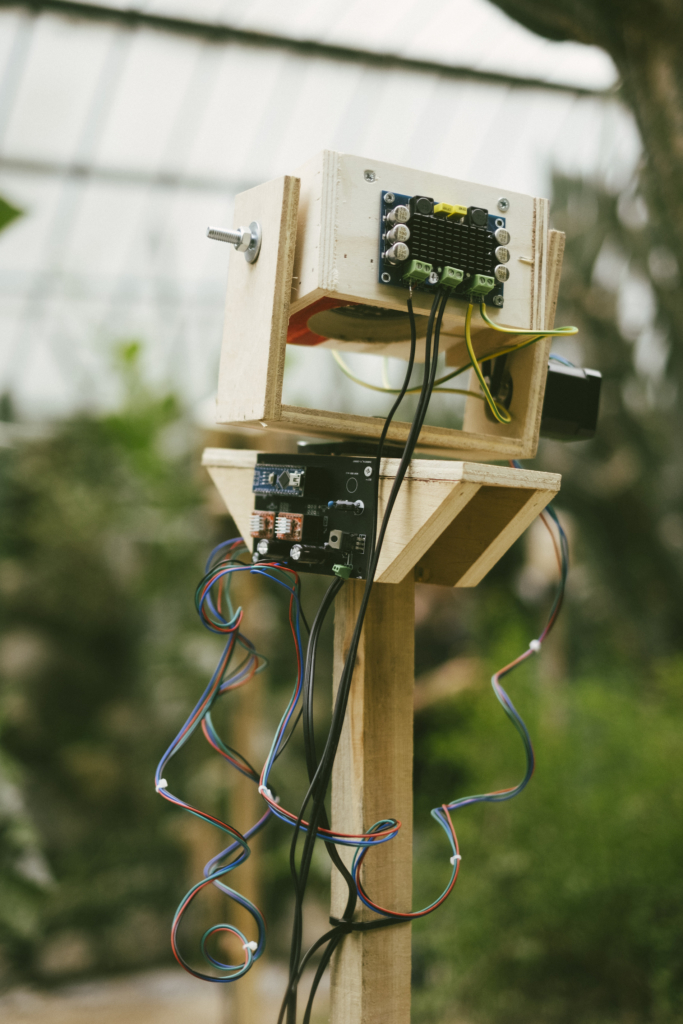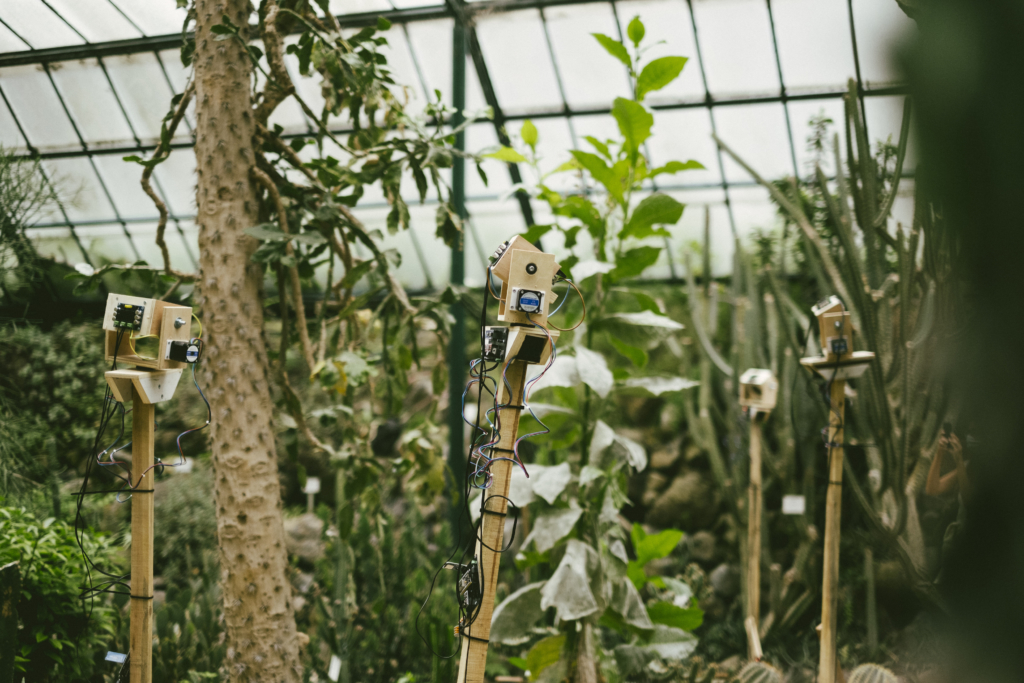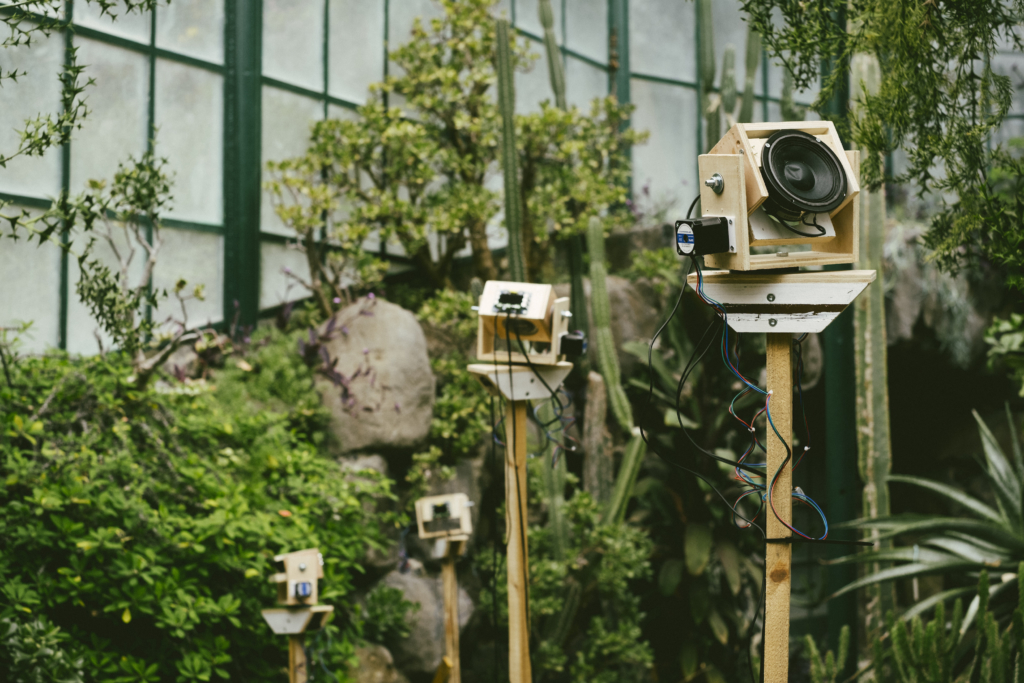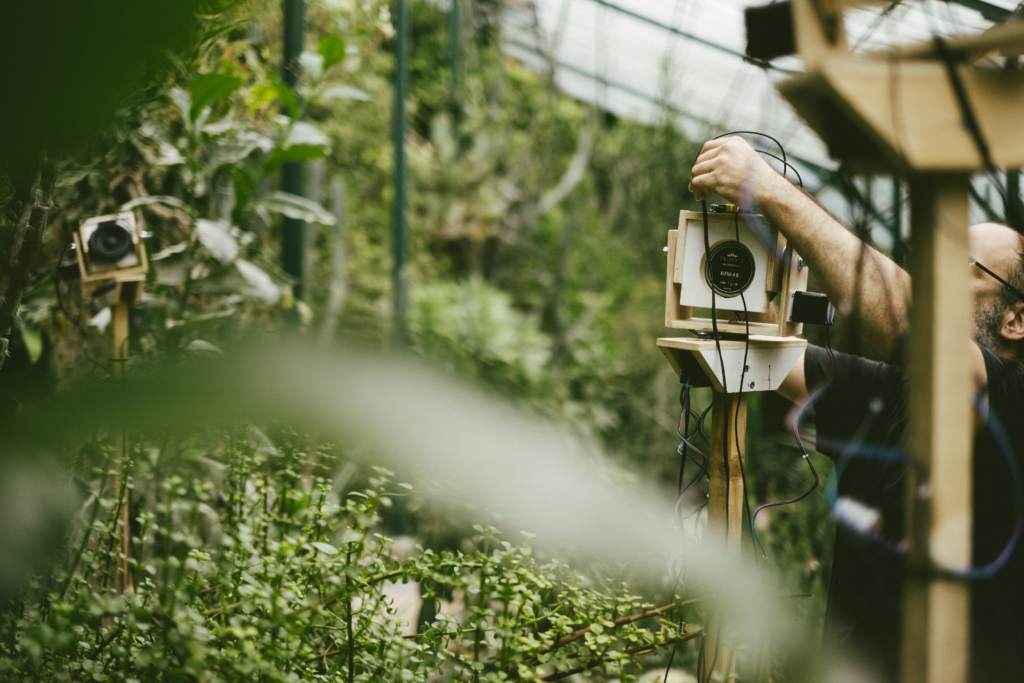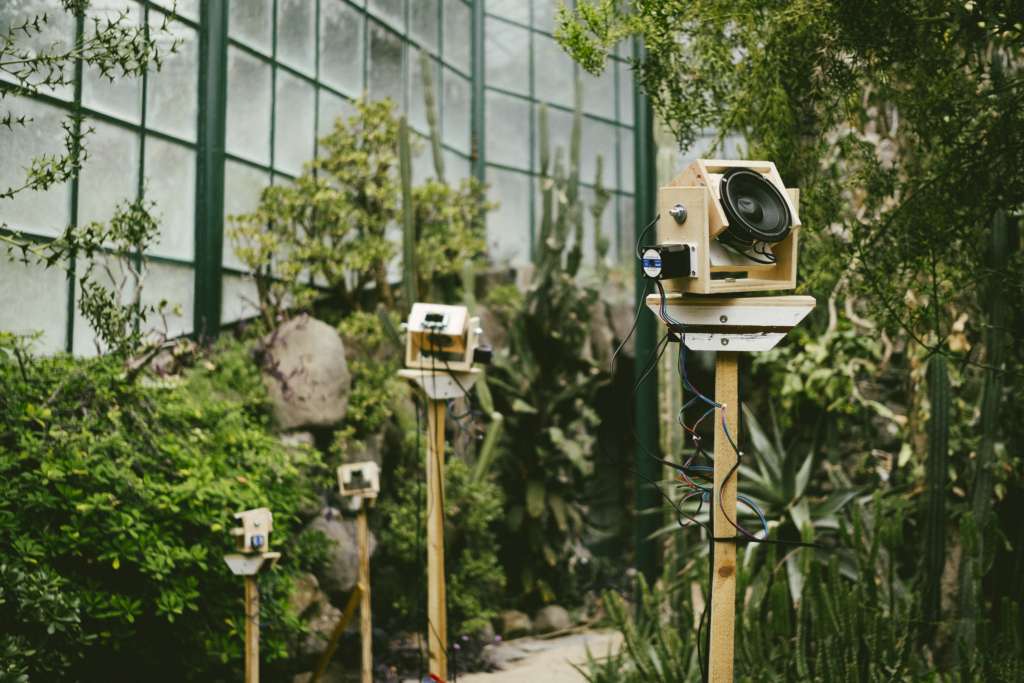In the Greek tragedy, the khoros performs functions that come from history as the voice of a non-individualized group of people that seeks to provide information and situate the spectator in the play, so as not to lose it in the progress of the narrative. What we say in texts comes to us, but we also know that they would be danced and sung. In this sound installation we let the mask, prosopon and the sound of the voice operate as it is said, using the same techniques used by the choir to which the dancing body is removed, leaving a series of animated heads that support what the uniform collective says, a city voice that makes the spectator pass by, the target of his opposite scene, who now sees himself as an actor without text, and this is where the sound is directed, his multiplied and directed voice. The choir projects the voices simultaneously, counterpointly and also in the cloud, a stochastic process that produces a sound and textual experience. The text used is taken from Sophocles’ Electra, especially the part of the choir, formed by Mycenaean women who question the protagonist’s pain, ending up exposing the sexism present in Greek society.
Photos Vera Marmelo. Sound recording Mestre André. Video Joana Linda.
*As cultural agents, we felt the responsibility to make space for contemporary creation and contribute to attenuating the overwhelming effects that the pandemic had on the cultural sector, which was deeply massacred by this situation. Therefore, Lisboa Soa opened an open call for artists residing in Portugal to create sound installations and sculptures adapted or created specifically for the festival, having awarded 6 grants of €1500.
The theme that set the tone for this call was “The Journey”.
